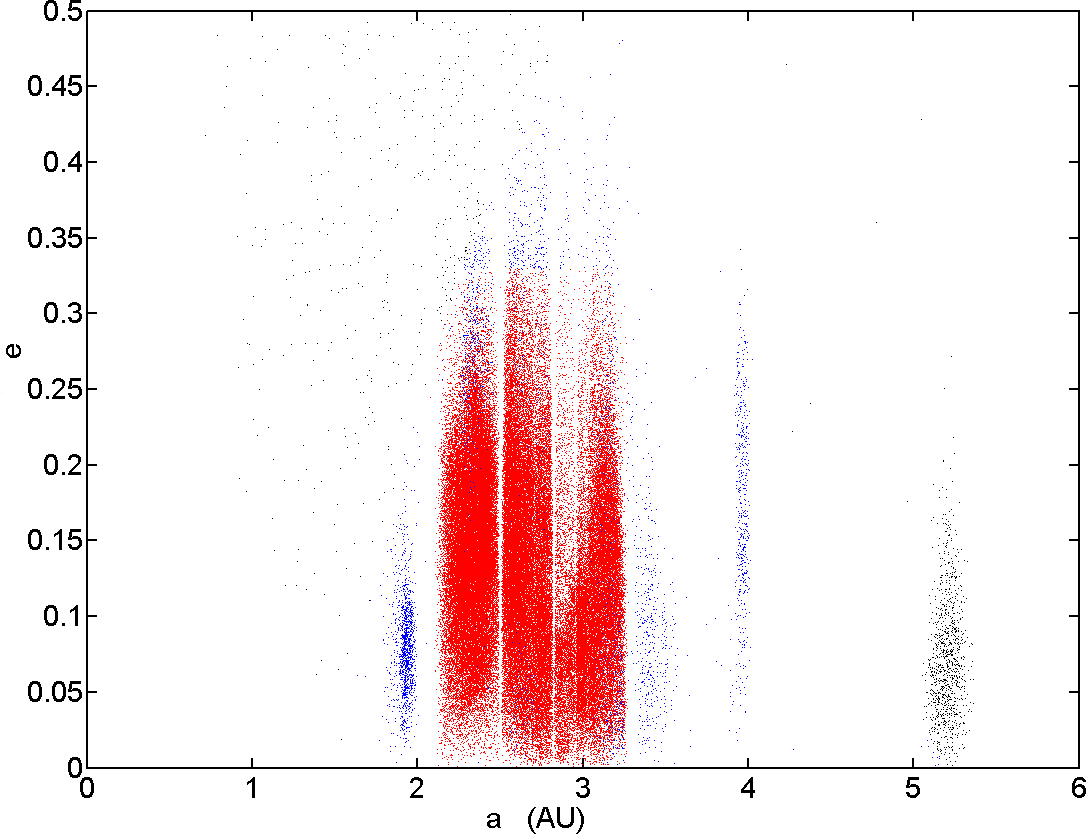Nereus NEAR us
Posted: Fri Dec 10, 2021 11:51 pm
https://en.wikipedia.org/wiki/4660_Nereus wrote:
<<4660 Nereus, provisional designation 1982 DB, is a small (about 0.33 kilometres asteroid. It was discovered by Eleanor F. Helin on 28 February 1982, approximately a month after it passed 4.1 million km from Earth. Nereus is potentially an important asteroid with a high albedo. It is an Apollo and Mars-crosser, with an orbit that frequently comes close to Earth, and because of this it is exceptionally accessible to spacecraft. Indeed, because of its small size and close orbit, its delta-V for rendezvous of ~5 km/s is smaller than the Moon's, which is about 6.3 km/s.
Nereus is classified as a potentially hazardous asteroid (PHA), due to both its absolute magnitude (H ≤ 22) and its minimum orbit intersection distance (MOID ≤ 0.05 AU). Nereus makes seven approaches to Earth of less than 5 million km between 1900 and 2100. The closest will be on 14 February 2060, at 1.2 million km. The next close approach is on 11 December 2021, when it will be 3.9 million km away. During the 2021 approach it will peak around apparent magnitude 12.6. Its orbital period of 1.82 yr also puts it somewhat near a 2:1 orbital resonance with Earth, which means that an approximately 4-year mission could depart for and return from the asteroid on relatively near passes to the Earth. The asteroid is classified as E-type, so it could be potentially associated with aubrite meteorites (enstatite achondrites).
Nereus was proposed for visitation by both the private Near Earth Asteroid Prospector (NEAP) probe, and the Japanese sample return mission Hayabusa. However, the NEAP probe was not realized, and the Hayabusa's launch was delayed by 10 months and the probe had to be redirected to 25143 Itokawa. 4660 Nereus was considered as a flyby target of the NEAR robotic spacecraft mission. NEAR was eventually launched, but visited 253 Mathilde and 433 Eros.
Nereus has a generally ellipsoidal shape with dimensions of 510 m × 330 m × 241 m. On the ends of its longest axis, one end appears narrower and rounder than the other, larger end, making it more of an egg shape. The larger end also appears to have a flatter region on one side of it. Nereus rotates about an axis roughly perpendicular to its longest axis much like a silver spoon spinning on a table.
Although the discoverer is given the opportunity to name the asteroid, Helin donated naming rights to the Planetary Society which organized a naming contest. The winner, Robert M. Cutler, then an employee of NASA contractor The MITRE Corporation, named the asteroid after the ancient Greek proto-god Nereus who had characteristics later attributed to Apollo (prophecy) and Poseidon (a sea god similar to Nereus but with legs rather than a fish tail).>>



